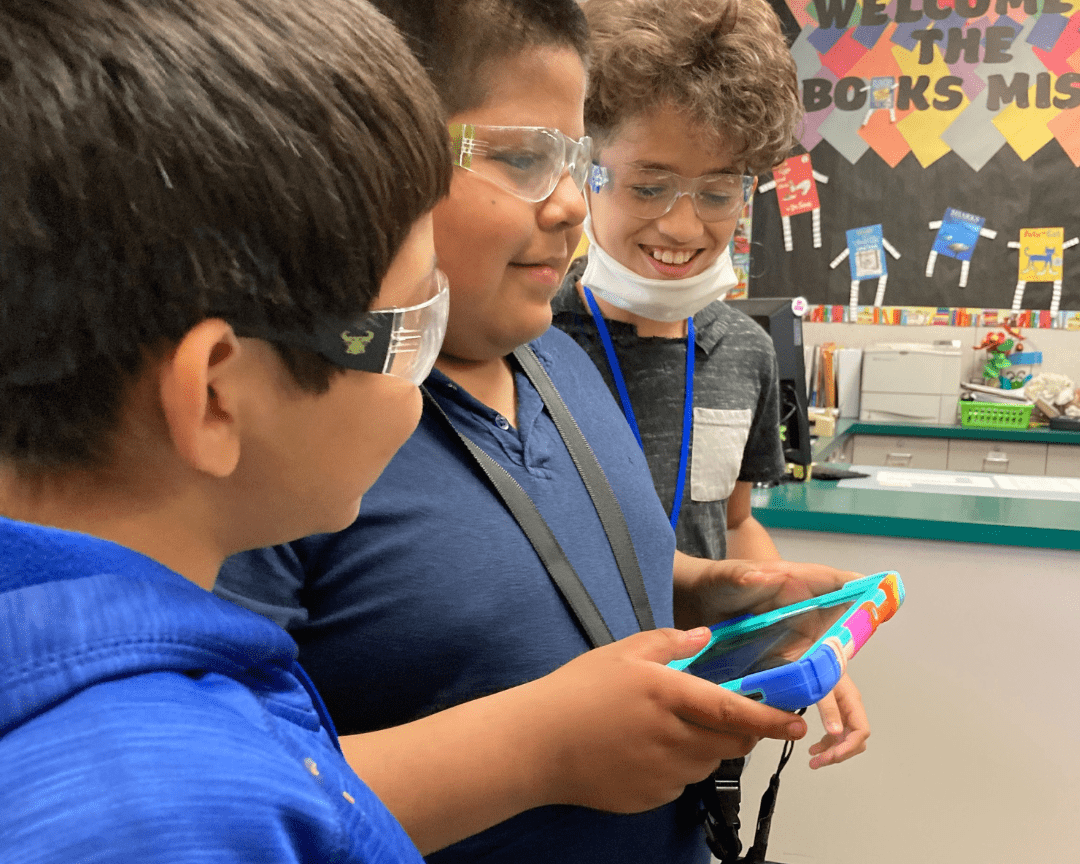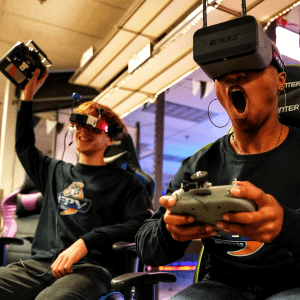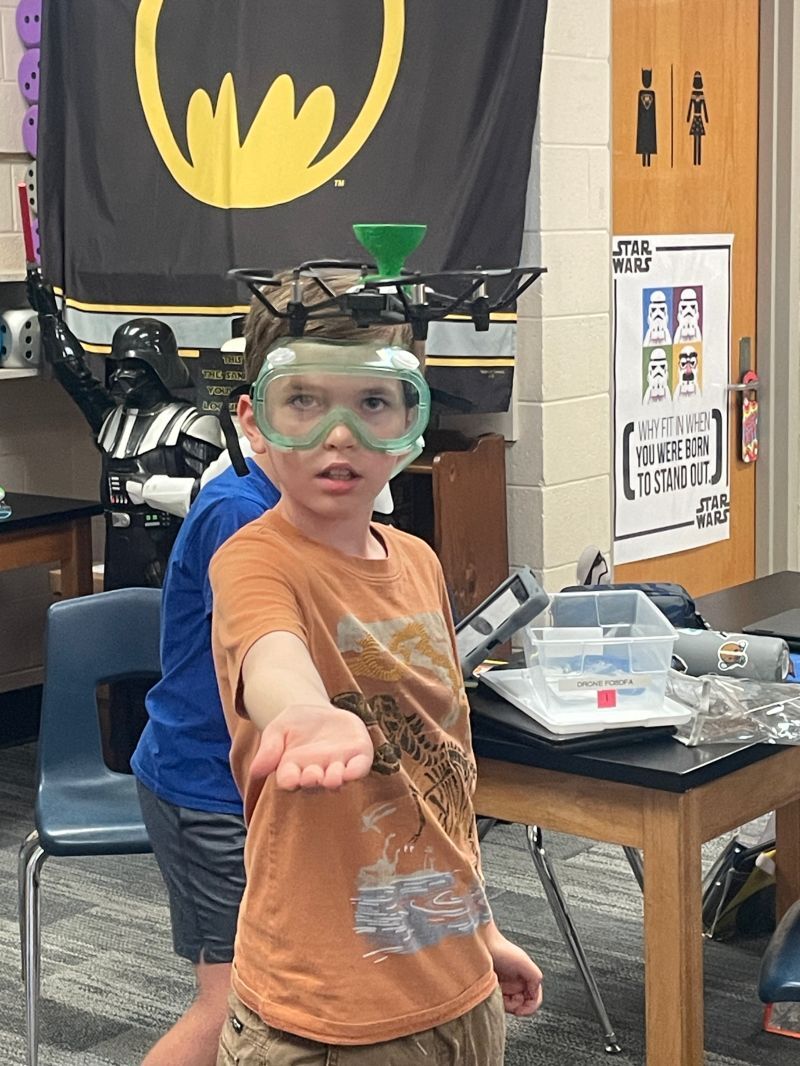How does the Drone Legends program work in schools? We interviewed Lily Kulchitskaya, after school program manager at a large west coast school district, to find out. Read to learn what it’s like to run our drone education program for kids!
What is it like to set up a Drone Legends program?
First, we organize dates for all the schools in our program. We typically start each semester with five to ten schools in the district. Then we go to the schools to prepare before the program starts. We always make sure to let the office know we’re there to get ready.
Before we start anything, we set up all our equipment and materials. Sometimes we run the program in a classroom; sometimes in a cafeteria or gym. For elementary schools that don’t have a gym, we often use a classroom.
Next, we align with the instructors. We discuss what tools they’re going to need, the program schedules, storage, materials, tech, and anything else they need to know. When they show up to start the program, they know what to expect.
Do you select which staff will be part of the drone program?
Yes. We always have to fingerprint anyone who wants to work as an instructor. That process can take a while. But luckily we can recruit staff who are working within the district— trusted facilitators who are already cleared.
Our instructors are from different fields. Some specialize in math, and others are university students majoring in coding. A lot of them already work for schools. We all bring in our differences and similarities to make the program work well.
What do you look for in a good facilitator for the program?
Mainly, we consider their background. We assess what experience they have working with kids. Can they speak in front of a classroom? Can they handle the technology required to teach the class?
Experience with STEM is preferred, but as a STEM program, all that knowledge is in the curriculum. Teachers don’t need to be STEM experts. We look for facilitators who can manage the class and engage with students for an outstanding experience.
A lot of the instructors that we took in for this recent season were already staff within the school system. Teachers, tutors, assistants— they’re familiar with the instructor process. But if there’s a newer facilitator, we pair them with someone who’s more experienced.
What materials do the teachers get to use?
We equip facilitators with the Drone Legends curriculum plus four boxes of supplies. Boxes include:
- Drones and replaceable parts
- Instructor manuals
- Student workbooks
- Technology teaching materials
- Pencils
- Tablets to control the drone
- Extra drone accessories to add for different drone missions
It’s really organized. We make sure to include everything so teachers can cultivate the best outcome possible.
Do the instructors have to prepare or study anything to understand the curriculum?
We provide training. We try to pair up newer instructors with experienced leaders. If they need help incorporating the curriculum into the class, they have someone there who knows what to do.
Facilitators also maintain an open line of communication with the Drone Legends team. From weekly meetings to phone calls and emails, we make sure everyone is on the same page.
Is the curriculum easy for teachers to use?
Yes! I know some teachers are nervous at first because STEM and drones can seem like such advanced topics to introduce to kids. But it’s straightforward to pick up, especially with the Drone Legends facilitators ready to help.
A lot of the teachers I’ve discussed feedback with say things like, “This program was a lot better than I expected!” Everything is ready to go, and the support is there. So it works out.
How do kids respond to Drone Legends programs?
A lot of kids react positively to the program. Some kids even want to join the same program again when we return the next semester for the other students. For example, when we run a summer program— which is shorter than a regular semester— a lot of students will ask how they can complete the missions on their own after the program ends.
Even their parents will tell us, “Our kids love the program so much that they want more. Will you be back in the fall when school starts?” Hopefully, we can continue the program into the fall. I’d say it’s received well.
As someone in the education space, what do you think about drones as educational tools?
I think it’s a lot of fun for the kids and the instructors. But I also think we’ll start seeing drones in schools long-term. Students get a lot out of it— they get to learn skills they can incorporate in their future.
One student told us that he liked the program so much that he wants to study computer science. He would’ve never thought about the interesting possibilities with drones if it wasn’t for this program.
How is Drone Legends different from other elementary STEM programs today?
I’d say that Drone Legends has a lot more to offer in terms of technology and step-by-step instruction. Other programs aren’t as structured. We make everything very accessible.
With all the training, materials, and curriculum guidance, teachers can help kids get more in-depth with the lessons. In other STEM programs, some kids get left out. Some simply don’t have the tools to explore hands-on. This drone program fills in that gap.
What advice would you give to educators who are interested in Drone Legends?
Find instructors who are excited and passionate about the subject. Encourage facilitators already in the school system to get involved.
Trying anything new can be challenging, but having someone there to help you do it right makes the whole experience. That’s why Drong Legends exists.
I’d also suggest that they follow the curriculum structure. It’s pretty comprehensive. Since it’s all laid out for you, the class gets the best results when teachers follow it through.
Give it a try and have fun! Always feel free to reach out to Drone Legends with any questions along the way.




